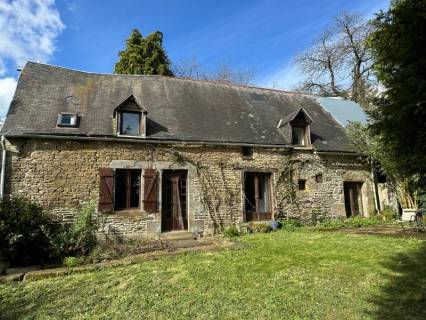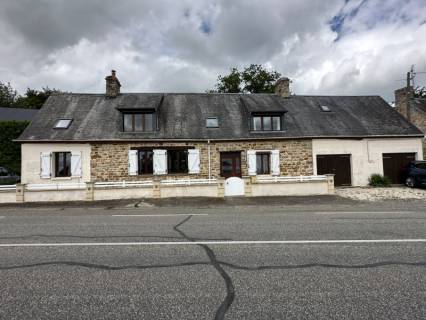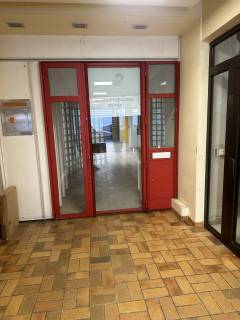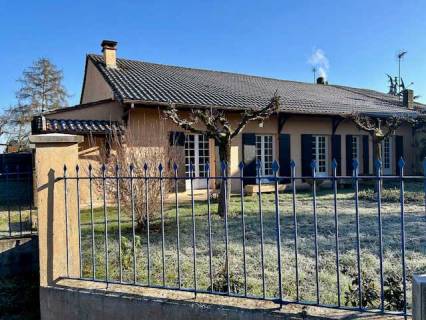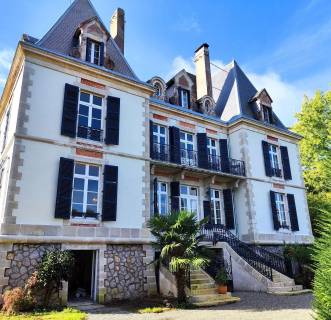Feb 262020
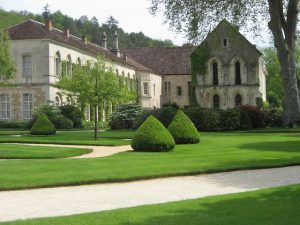
Fontenay Abbey
Burgundy, or Bourgogne, is one of France’s great historic regions, famous for its religious heritage, canals and, of course, its wines. It is situated in central-eastern France on the main lines of communication between Paris and Lyon, and is bordered by the Loire river to the west, the Franche-Comté and Champagne areas to the east, and the Rhone Alpes to the south.
This extremely prosperous region was, until 1477, independent of France, even siding with the English against the French during the Hundred Years War. It was also one of Europe’s most important religious centres, and boasts a wealth of religious heritage sites, including the UNESCO listed Fontenay Abbey and the Citeaux Abbey, both in Beaune.
Burgundy is made up of four French departments: Cote d’Or (north-east), Nievre (south-west) , Saone-et-Loire (south-east) and Yonne (north-west). Its capital, Dijon, is home to the imposing Palace of the Dukes, where the distinguished Musée des Beaux-Arts was established in 1787.
Dijon
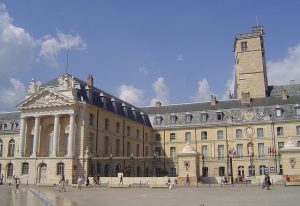 Not only is Dijon a major administrative and cultural centre, it is also an important communications and freight-distribution hub, located less than two hours from Paris by TGV.
Not only is Dijon a major administrative and cultural centre, it is also an important communications and freight-distribution hub, located less than two hours from Paris by TGV.
Home to the Dukes of Burgundy between the early 11th and late 15th centuries, Dijon was one of the great European centres of art, education and science. Its rich heritage is evident in its pedestrian-only historic centre, now a UNESCO World Heritage site, whose narrow streets are lined with honey-coloured stone houses.
Must-sees here are the imposing Palace of the Dukes of Burgundy, which opens onto the main city square and is now the town hall and administrative offices; the Parliament Building, the 13th century Gothic Cathedral of Saint Bénigne, with its Romanesque crypt, and its Fine Arts Museum (Musée des Beaux-Arts), which ranks among the finest art museums of Europe.
Every autumn, Dijon holds an International Gastronomic Fair, one of the ten most important fairs in France, and every three years hosts Florissimo, an international flower show. Dijon is also, of course, famous for its mustard, which originated in 1856, when chef Jean Naigeon used grape juice instead of vinegar in a mustard recipe.
Burgundy Wines
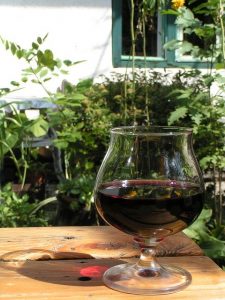 Some of the world’s most famous and prestigious wines come from Burgundy’s concentrated vineyards, which stretch for several hundred kilometres along the western fringe of the Saône plain. The Côtes de Nuits and the Côtes de Beaune vineyard areas are home to such renowned names as Gevrey-Chambertin, Vosne-Romanée, Pommard, Volnay and Clos de Vougeot, one of the largest vineyards in Burgundy.
Some of the world’s most famous and prestigious wines come from Burgundy’s concentrated vineyards, which stretch for several hundred kilometres along the western fringe of the Saône plain. The Côtes de Nuits and the Côtes de Beaune vineyard areas are home to such renowned names as Gevrey-Chambertin, Vosne-Romanée, Pommard, Volnay and Clos de Vougeot, one of the largest vineyards in Burgundy.
Enthusiasts can also enjoy Chablis, Beaune, Macon and Nuits-Saint-Georges, which are also produced in this region.
One of the best ways to discover prestigious Burgundy wines is to go on the 60 km Route des Grands Crus, or Grand vintage wine trail, which takes in almost forty picturesque wine villages of the Côte de Nuits and Côte de Beaune wineries.
The Burgundy Canal
A perfect way to discover Burgundy is by cruising along the Burgundy Canal, a masterpiece of pre-industrial revolution technology which spans over 250km between the rivers Yonne and Saone. It starts in the north at Migennes, and passes through forested hills, picturesque villages and towns, medieval castles, ancient abbeys, fortified walls and vineyards, until it reaches St Jean de Losne in the south.
Côte d’Or
The Cote d’Or department, around Dijon, is hilly in the north west and flat in the south east, and boasts several of the region’s most interesting and scenic highlights, towns and villages.
Its highlights include:
- Dijon and its extensive historical centre
- Beaune, one of the best preserved medieval cities in the region and former residence of the Ducs de Bourgogne
- Les Hospices de Beaune, one of France’s most unusual monuments, this museum and art gallery contains one of the most famous works of medieval Flemish art, the alterpiece by Roger van der Weyden
- Fontenay Abbey, one of the most interesting and complete abbeys and architectural treasures in France, this Cistercian monastery was founded in 1118 by St-Bernard
- Citeaux Abbey, founded in 1098, this is the cradle and headquarters of the Cistercian Order and a flagship of Christianity
- Châteauneuf-en-Auxois, a charming hilltop town with a turreted castle built in the 12th and 15th centuries, which offers lovely views of rolling farmlands, the Burgundy Canal and the woodlands of the Morvan
- Château de Commarin, built in 1346
- Flavigny, classified as one of the ‘most beautiful villages of France’
- Chatillon-sur-Seine, and its museum, the Musée du Pays Châtillonnais, known for its collection of pre-Roman and Roman relics, and the Trésor de Vix, or Vix Grave, a burial mound and grave of the Lady of Vix, from around 500 BC
- Alésia Muséoparc, a living history museum on the site of the Battle of Alesia, where Julius Caesar defeated the Gauls in 52 BC
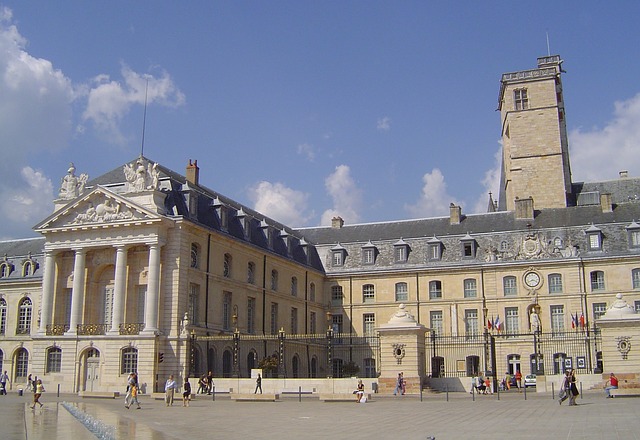
Saône et Loire
Stretching from the banks of the Loire in the west to the foothills of the Jura in the east, this department includes large flat expanses of the Saône valley. A less established Burgundy tourist destination than its northern counterparts, it still has places of interest and many delightful historic churches. Its prefecture, or capital, is Mâcon, which sits on the banks of the Saône River and is the southernmost town in Burgundy.
Its highlights include:
- Mâcon, with many well-preserved historic houses, is a centre of white wine production mostly using Chardonnay grapes
- Le Maconnais, the area around Macon, with plenty of wine-tasting opportunities in the southern part of the Burgundy vineyards
- The cathedral at Autun, one of the finest Romanesque cathedrals in France, containing some remarkable sculptures
- Digoin, a popular pleasure boating centre, with a fine canal aqueduct over the Loire
- The 11th century Benedictine Abbey at Cluny, once the largest church in Christendom, which now features impressive ‘enhanced reality’ screens depicting the abbey when it was built
- Cormatin, a 17th century renaissance style château surrounded by a moat, with richly decorated interiors and recently renovated gardens
- Tournus, whose early 11th century church of St Philibert is one of France’s oldest churches
- Semur en Brionnais, among the ‘most beautiful villages of France’ with a fine medieval chateau and a Romanesque church
- The basilica at Paray-le-Monial and the church at Anzy-le-Duc, two important religious monuments
Yonne
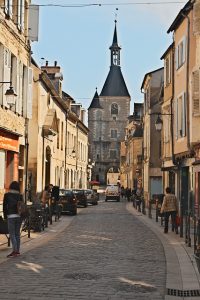
Avallon
This rolling agricultural area borders the outer fringes of the Paris region and is best known for its medieval architecture, with several attractive towns and villages worth exploring. Its capital is Auxerre, a designated ‘city of art and history’.
Its Highlights are:
- Auxerre, with its half-timbered houses, atmospheric neighbourhoods and fine cultural heritage
- Vézelay, an historic hilltop town and site of the Call to the Second Crusade by St-Bernard in 1146. Its Abbey is a UNESCO World Heritage Site and starting point of one of the main pilgrimage routes to Santiago de Compostella
- Chablis, a pretty village that is a must for wine enthusiasts, with vineyards, wine museums and cellar visits
- Pontigny Abbey, where Thomas Becket took refuge from the English King Henry II in the 13th century
- The Château de Tanlay,built in the 15th and 16th centuries in a series of moats, arcades and iron grills, surrounded by a park, with a beautifully-decorated interior
- Guédelon Castle, a brand-new castle built using only medieval methods and tools which featured on BBC’s ‘Secrets of the Castle’ series
- Avallon, an attractive walled town dominated by a formerly collegiate church of Saint-Lazare, which dates from the 12th century
- Noyers-sur-Serein, an attractive medieval town with half-timbered houses
Nièvre
This hilly department includes the highest peak of the Morvan hills (Le Haut Folin, 903 m) and a large part of the Morvan Regional Natural park, popular with hikers and cyclists. It is best known for its unspoiled countryside and ancient woodlands. Nievre has fewer important towns and monuments, but there are still some notable places to visit, including its capital, Nevers, on the banks of the river Loire.
Its Highlights include:
- Nevers, home to the imposing Palace of the Dukes of Nevers, a fine Renaissance château, and St Cyr and Ste. Juliette’s Gothic Cathedral
- La Charité sur Loire, whose large Romanesque Notre Dame basilica is a UNESCO heritage site on the Pilgrimage route to Santiago de Compostella
- The Morvan Regional Natural Park, an area of outstanding natural beauty, popular with hikers and nature-lovers, often entered via the gateway town of Corbigny
- The vineyards of Pouilly sur Loire
- The town of Clamecy, whose church of St Martin dates from the 13th, 14th and 15th centuries
Property hunters can still snap up bargains throughout Burgundy, with many beautiful historic and rural properties on the market. In the Cote d’Or, a two bedroom cottage may cost as little as €70,000, while a large property ideal for converting into gites may cost around €550,000.
In Saone-et-Loire, there are many cosy cottages available for less than €100,000, and at the other end of the scale, some extraordinary castles and country houses are on sale for up to €1.8m.
In Yonne, you can find beautiful country properties in the region of €200,000-250,000, while a spacious and elegant manor house could be yours for just under €600,000.
In quieter Nievre, village houses start at just under €40,000, with several to choose from under €100,000. At the upper end, renovated castles now operating as hotels may be found in the €600,000-700,000 price bracket.
With its extraordinary history, world-renowned vineyards, the Burgundy Canal and direct access to the two major cities of Paris and Lyon, it’s little wonder that Burgundy is becoming an increasingly attractive proposition for property-hunters.


